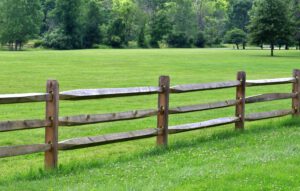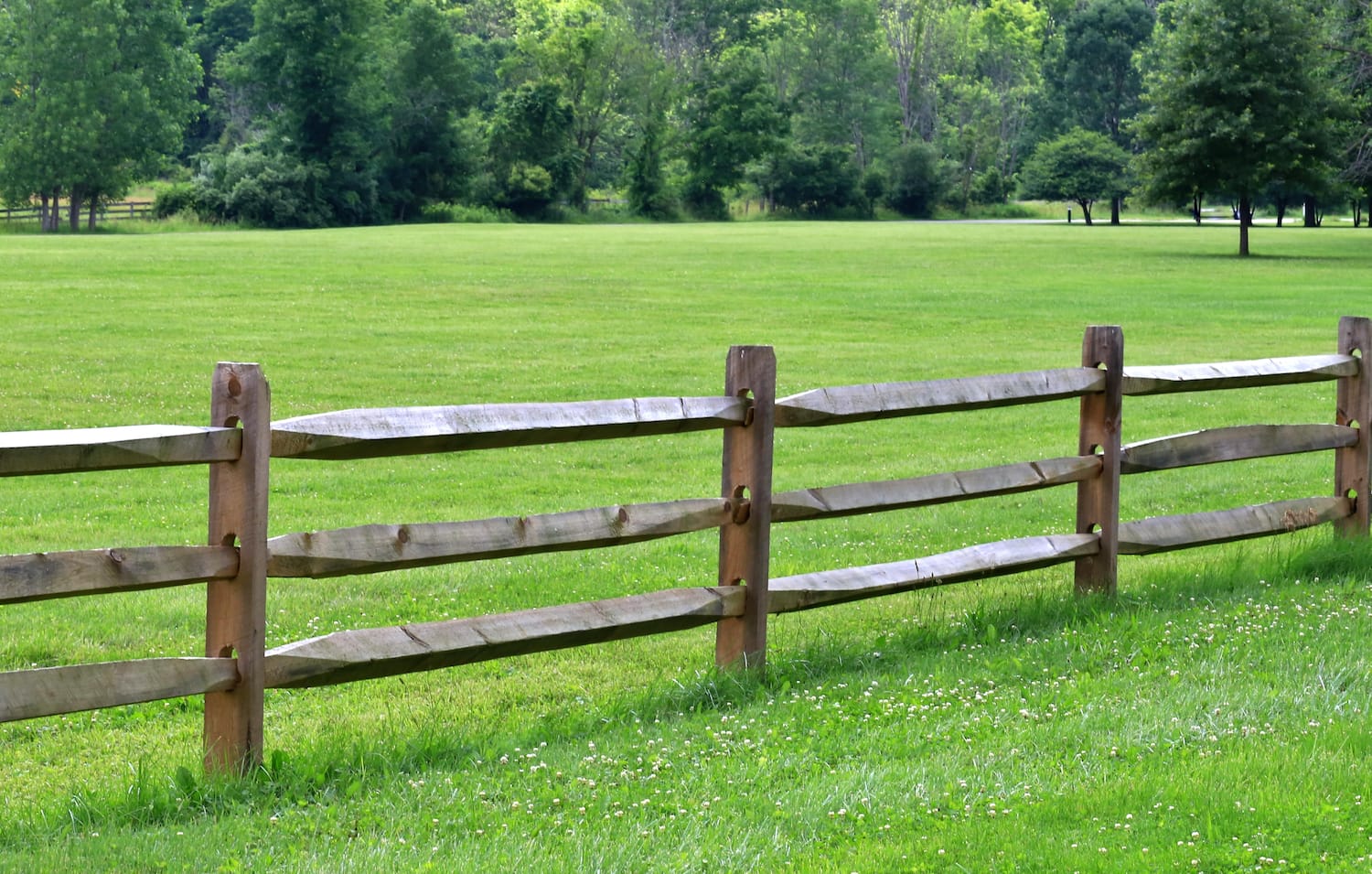A wooden Matthews Fence is a great way to boost privacy, add security, and create a clear delineation between property lines. They can also be used to keep pets and kids away from swimming pools and other dangerous areas.
Generally, the more durable the wooden fence material is, the higher the cost will be. Pine and spruce are cheaper options, but they do not last as long as cedar.
Cedar is an aesthetically appealing choice for wood fences. It has a rich, warm color and is naturally durable. It also resists decay and insect attacks. This makes it a good choice for long-term fencing projects, and it’s easy to work with. However, it is a little more expensive than other types of wood.
There are several different types of cedar stain available, so you can choose the one that best suits your preferences and budget. Oil-based stain and sealers tend to last longer and provide better protection from UV rays than water-based options. However, oil-based products can be more difficult to clean up and may give off strong odors during application.
Whether you decide to use stain or sealer, it’s important to follow the manufacturer’s instructions carefully. Before you start, it’s a good idea to power wash your fence to remove any dirt or debris that could prevent an even coating later on. You should then allow the fence to dry completely before applying a new coat. This process will help you keep your wood fence looking new and beautiful for a longer period of time.
Many people choose to have a wood fence because of its natural beauty and low maintenance demands. However, choosing the right type of wood is crucial to ensuring the longevity and durability of your fence. Cedar is an excellent choice for your wood fence because it’s stronger and more durable than pressure-treated pine and has a more attractive finish.
While PT pine is cheaper and more widely available than cedar, it requires a lot of maintenance and doesn’t last as long. Cedar is more expensive than PT pine, but it’s worth the investment over the long term. It’s also easier to maintain and can be stained in a variety of colors to match your home. Cedar is also more resistant to rot than other types of wood. It’s a great choice for a long-term fence, especially if you live in an area with harsh weather conditions.
Redwood
Redwood is a durable and rugged wood that resists rot and insects. It can be crafted into various styles of fencing to suit different tastes and home landscapes. It can be stained to enhance the beauty of your fence. It is also relatively easy to maintain, as it can be cleaned with plain water. Regular cleaning will keep dirt and debris from accumulating on the surface of your fence, and you can even use a mild detergent for a deeper clean.
There are several grades of redwood available, ranging from construction to clear. Construction-grade wood is commonly used because it is affordable, but it can have flaws that compromise the durability of your fence. Clear and premium grades are more expensive, but they are durable and resistant to rot and pests.
When choosing the right redwood for your fence, it is important to consider what design style you are interested in and how long you want the fence to last. If you are looking for a fence that will last 35–40 years, choose a board-on-board style with alternating planks. This look will provide a solid barrier for your property and will hold up to the elements, including strong winds.
A redwood ranch rail fence is another great option if you have a large space to fence out. This style looks simple yet cute, and it is a good choice for keeping pets or children contained. The rails can be curved or straight, depending on your preference. It is also a great choice for those who want to block out a view or keep out neighborhood traffic.
For a more contemporary look, you can use lattice as the main feature of your fence. This type of fence is perfect for those who want to add a touch of elegance and sophistication to their garden or patio area. Lattice fences can be created using a variety of materials, but the best option is usually wood.
If you’re looking for a more sustainable option, you can choose from cypress or cedar. These species of trees absorb carbon dioxide and store it within their structure, making them a green choice for environmentally conscious consumers. They also require less maintenance than other types of wood and are naturally resistant to rot and insects.
Lattice
A lattice fence can be a decorative addition to any yard or garden. It is available in wood, vinyl, and metal and can be used as a full fence or in place of other fencing types. This type of fencing can help direct pedestrian traffic and add to the overall aesthetic of your property. It is easy to keep clean and can be decorated with flowers, plants, or other accents for a customized look.
Wood lattice fences are typically made of cedar and offer a wide variety of customization options. The material is also inexpensive compared to most other fence materials. Vinyl lattice fencing is a standard alternative to wood for most fence styles and is relatively low-maintenance. Metal lattice fencing is a more durable option than vinyl and is available in aluminum, steel, or wrought iron. The metal fences are rust-resistant and hold up well in most climates, but they can be more expensive than other choices.
When used as a privacy fence, lattice works best for yards with trees or other landscaping features. This is because it doesn’t create a solid field to block out the view or sound of the outside world. However, you can achieve some privacy by choosing a lattice fence with solid fencing below and an open lattice top.
You can build a lattice fence out of almost any material, but it is important to choose a strong and sturdy one. Wooden lattice fencing has a tendency to rot and is vulnerable to weather damage. It is also prone to mildew and mold, so you should regularly check it for signs of these and remove any affected areas. Wooden lattice can also be prone to warping, especially if there isn’t enough space between the panels for breathing room.
A popular way to use a lattice fence is to plant climbing or trailing vines and allow them to grow through the openings. This creates a green wall that functions as both a privacy fence and a garden feature. It’s possible to achieve a more decorative look by painting the lattice white. This would complement the bright pink blooms of a climbing flower or the deep green foliage of a hedge.
Posts
A fence post is a vertical piece of wood, metal, or other sturdy material that supports horizontal pieces of fencing. It is set at intervals in the ground and secured with concrete or gravel. It’s important to ensure that the post is installed correctly so it does not fall over or cause other problems such as heaving or leaning. It’s also important to choose the right type of post for your needs and budget.
Cedar fence posts are a great option for homeowners who want a natural look to their fencing. These posts are also durable and resistant to the sun’s UV rays, which means that they won’t fade over time. They can also be stained to match other fencing materials. Cedar fence posts also don’t need to be treated with chemicals, so they are an environmentally friendly option.
Wooden fence posts are often cheaper than concrete ones, but they require more maintenance and may not last as long. To help prevent rot, the bottom of each fence post should be buried in gravel. This prevents water from entering the hole and rotting the post. In addition, it’s important to treat the sawn areas of each post with a timber preservative.
While concrete is more expensive than wooden fence posts, it’s still a cost-effective choice for many people. It is also easy to install and does not need any special tools. However, concrete is not as flexible as wood, which can make it difficult to work with if you need to adjust the height of your fence.
Concrete fence posts are also more susceptible to damage from heavy rain or snow. These types of storms can cause the concrete to heave and sink, making it harder to maintain a straight fence line. Similarly, if the concrete is exposed to sunlight for too long, it can crack and fade.
